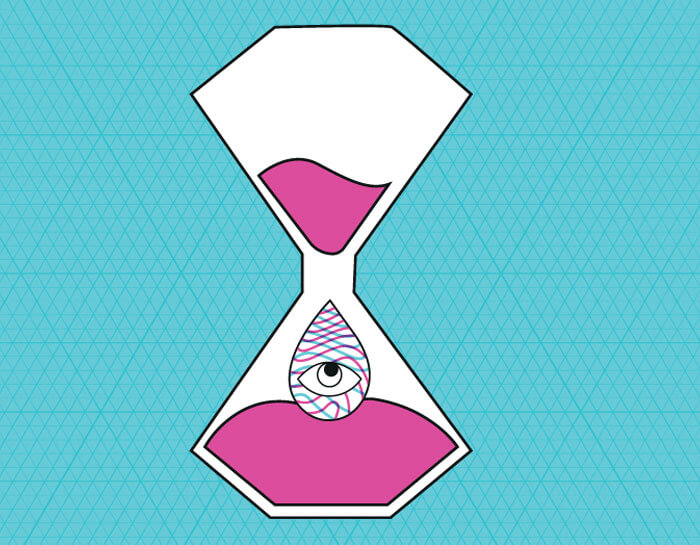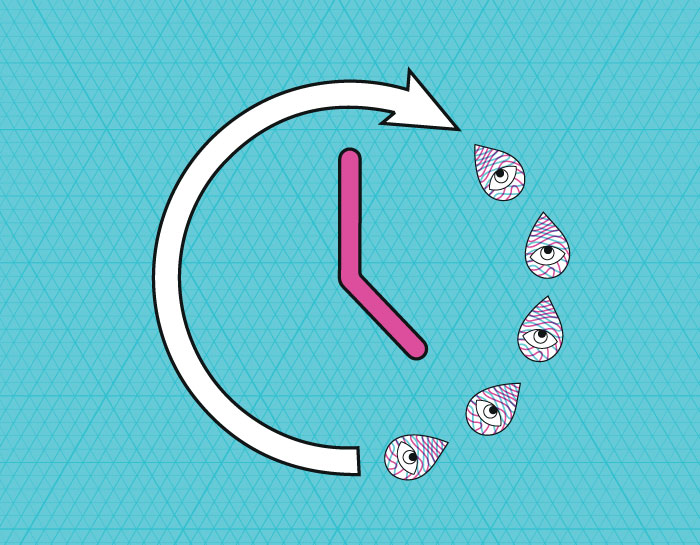
- Dextenza is an intracanalicular dexamethasone insert that provides sustained drug delivery to the ocular surface over a 30-day period
- FDA-approved for ocular pain following ophthalmic surgery – with an upcoming sNDA date for inflammation – it combats the key problems associated with topically administered drops; poor bioavailability, improper drop technique, potential toxicity and compliance
- Studies have found Dextenza increases bioavailability from 5 percent to 70 percent and decreases inflammation and pain after surgery –maintaining both for up to 45 days
- Patient-friendly approaches – like Dextenza – could replace problematic drug-delivery strategies in the future.
Cataract surgery is one of the safest and most widely performed ophthalmic procedures – and it plays a huge role in improving quality of life and reducing visual disability throughout the world (1). Nowadays, the technology used in cataract surgery is becoming increasingly advanced, further enhancing patients’ postoperative visual results. Inflammation, however, is a common consequence of cataract extraction, and keeping it under control is paramount to preventing complications as well as ensuring overall satisfaction for patients (2).
The list of possible postoperative complications caused by inflammation includes cystoid macular edema, increased intraocular pressure, posterior capsular opacification, chronic uveitis, fibrin formation and protein leakage from the breakdown of the blood-aqueous barrier (3, 4). Patients may experience mild to severe ocular pain and other discomfort like itchiness, burning, foreign-body sensation, and tearing (5). Surgeons routinely prescribe corticosteroid drops as part of their surgical strategy to reduce postoperative inflammation.
Despite their ubiquity, topically administered drops are inherently problematic because of their method of delivery. Not only are they associated with poor bioavailability, but compliance is also notoriously suboptimal – the nature of drops versus human nature. It has been estimated that within two minutes of instillation, more than 80 percent of a drop is eliminated via the nasolacrimal drainage system (6). And that means less than 5 percent of a given dose reaches intraocular tissues (7).
Patients have great difficulty with drops. They often repeat instillation, exposing the eye to potential toxicity associated with preservatives. Improper drop technique, like not washing hands, touching the bottle tip to the eye, missing the eye entirely or using an incorrect number of drops is common (8). When considering the age of the population undergoing cataract surgery and the common comorbidities, such as forgetfulness, arthritis and limited dexterity, it is clearly a daunting proposition for patients to adhere to complex tapering regimens (9, 10).
Another aspect of this layered situation is the impact that a lack of compliance has on drug efficacy. When topical corticosteroids are irregularly used, rebound inflammation can occur (11). Due to their intermittent application, drug concentration varies over time, with peak – immediately after instillation – potentially increasing the risk for side effects and trough concentrations – before the next instillation – potentially producing insufficient pharmacologic effect.
Numerous companies are working on drug-delivery methods to overcome the many barriers to optimal drop administration. Ocular Therapeutix has introduced Dextenza, a sustained-release intracanalicular dexamethasone insert containing 0.4 milligrams of active drug. Placed by the surgeon into the canaliculus, the insert provides a sustained and tapered delivery of drug to the ocular surface over a 30-day period. Late last year, the FDA granted approval of Dextenza for the treatment of ocular pain following ophthalmic surgery.
The insert contains only a fraction of the total dose of corticosteroid drops patients would typically administer postoperatively in a monthly course, so Dextenza may replace up to 70 topical drops. Research revealed that bioavailability increased from 5 percent to 70 percent with Dextenza (12, 13). The insert is placed by the surgeon, removing all compliance concerns and relieving the patient of the burden of a complex regimen of corticosteroid instillation and tapering. The insert does not contain preservatives, eliminating concern regarding ocular surface toxicity. Over time the device softens, subsequently clearing through the inferior nasolacrimal canaliculus so there is no need for its removal. If necessary, it can be expressed or irrigated out.
The FDA’s approval of Dextenza for pain indication was based on demonstrated efficacy in two randomized, vehicle-controlled phase 3 studies in which a statistically significantly higher incidence of subjects was pain free eight days after cataract surgery compared with the vehicle control group (12-14). Safety was also established in the two phase 3 studies as well as a third randomized, vehicle-controlled phase 2 study.

In a phase 3C clinical study, I (along with other investigators) further evaluated the insert’s effect on pain and inflammation (14). The 438 patients with planned clear corneal cataract surgery were randomized to receive Dextenza or placebo. The primary efficacy endpoints were complete absence of anterior chamber cells at day 14 and complete absence of pain at day eight. The onset of action was demonstrated immediately and 14 days after implantation, significantly more patients had an absence of anterior chamber cells in the treatment arm compared with placebo (52.3 percent vs 31.1 percent; P < 0.0001).
In addition, patients receiving Dextenza had decreased inflammation after surgery as early as day four and a decrease in pain as early as one day after surgery, both of which were maintained to day 45. The insert was well tolerated, with adverse events similar to placebo. Topical NSAIDs were not included in the trial and those that required rescue therapy were deemed a treatment failure. Interestingly, twice as many placebo patients required rescue therapy as Dextenza patients at day 14. Further, a small, qualitative survey found that treatment satisfaction with Dextenza is high (15).
Ocular Therapeutix has now submitted a supplemental New Drug Application (sNDA) to the FDA for Dextenza seeking to expand the current indication to include the treatment of ocular inflammation following ophthalmic surgery. The company expects that the FDA review will be completed in the second half of this year. Antony Mattessich, the company’s president and CEO, has stated its goal as making eye drop therapies obsolete. In connection with the approval and anticipated commercial launch of the product, Ocular Therapeutix has also submitted an application to Centers for Medicare and Medicaid Services for transitional pass-through payment status and an application for a permanent J-code. I for one am pleased.
When we think about the precision of modern cataract surgery with its advanced technology and premium lenses, it seems counterintuitive that we still ask our patients to struggle through their confusing postoperative drop regimens. By replacing problematic drug-delivery strategies with patient-friendly approaches like Dextenza, we can finally say, “Eye drops: your time is up!”
References
- G Davis “The evolution of cataract surgery”, Mo Med. 113, 58-62 (2016). PMID: 27039493. P Duan et al., “The comparative efficacy and safety of topical non-steroidal anti-inflammatory drugs for the treatment of anterior chamber inflammation after cataract surgery: A systematic review and network meta-analysis”, Graefes Arch Clin Exp Ophthalmol, 255, 639-649 (2017). PMID: 28130595. HB Dick et al., “Inflammation after sclerocorneal versus clear corneal tunnel phacoemulsification”, Ophthalmology, 107, 241-247 (2000). PMID: 10690818. B da Rocha Lima et al., “Fibrin reaction after uveitic cataract surgery: Treatment and prevention”, Eur J Ophthalmol, 24, 626-628 (2014). PMID: 24519510. S Porela-Tiihonen et al., “Recovery after cataract surgery”, Acta Ophthalmol, 94 Suppl, 2, 1-34 (2016). PMID: 27111408 JW Shell, “Ophthalmic drug delivery systems”, Surv Ophthalmol, 29, 117-28 (1984). PMID: 6505951. DS Aldrich et al., “Ophthalmic Preparations (USP 771)”, Pharmacopeia Forum, 39, 1-21 (2013). AJ Winfield et al., “A study of the causes of non-compliance by patients prescribed eyedrops”, Br J Ophthalmol, 74, 477-480 (1990). PMID: 2390523. MM Hermann et al., “Electronic compliance monitoring of topical treatment after ophthalmic surgery”, Int Ophthalmol, 30, 385-390 (2010). PMID: 20373127. JA An et al., “Evaluation of eyedrop administration by inexperienced patients after cataract surgery”, J Cataract Refract Surg, 40, 1857-1861 (2014). PMID: 25248295. L Renfro et al., “Ocular effects of topical and systemic steroids”, Dermatol Clin, 10, 505-512 (1992). PMID: 1617809. E Donnenfeld et al., “Dexamethasone intracameral drug-delivery suspension for inflammation associated with cataract surgery: A randomized, placebo-controlled, phase III trial”, Ophthalmology, 125, 799-806 (2018). PMID: 29397189. E Donnenfeld et al., “Safety of IBI-10090 for inflammation associated with cataract surgery: Phase 3 multicenter study”, J Cataract Refract Surg, 44, 1236-1246 (2018). PMID: 30139638. S Tyson et al., “Multicenter randomized phase 3 study of a sustained-release intracanalicular dexamethasone insert for treatment of ocular inflammation and pain after cataract surgery”, J Cataract Refract Surg, 45, 204–212 (2019). PMID: 30367938. JP Gira et al., “Evaluating the patient experience after implantation of a 0.4 mg sustained release dexamethasone intracanalicular insert (Dextenza): Results of a qualitative survey”, Patient Prefer Adherence, 11, 487-494 (2017). PMID: 28331295.
